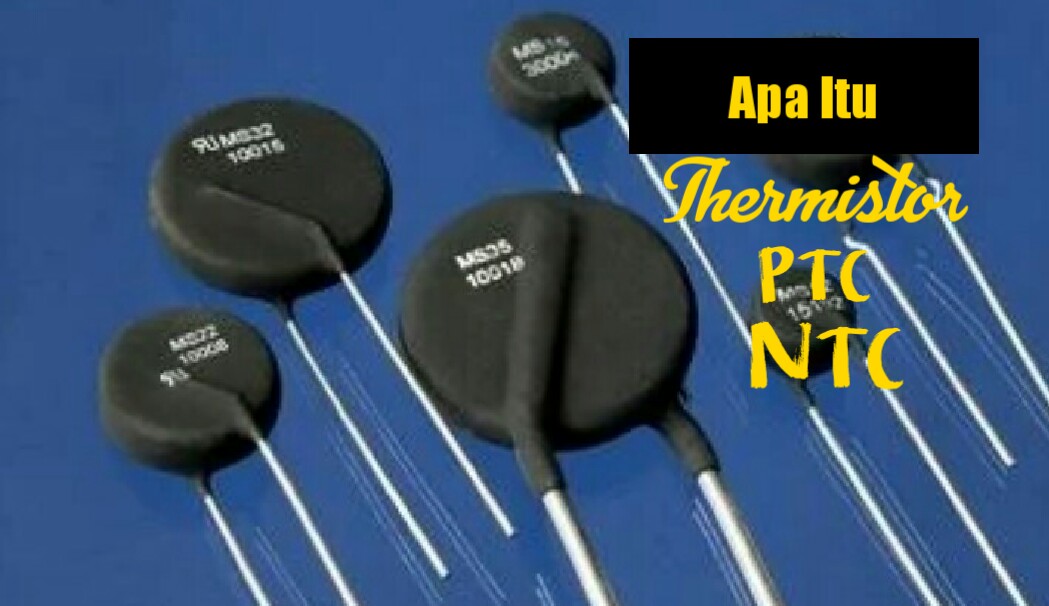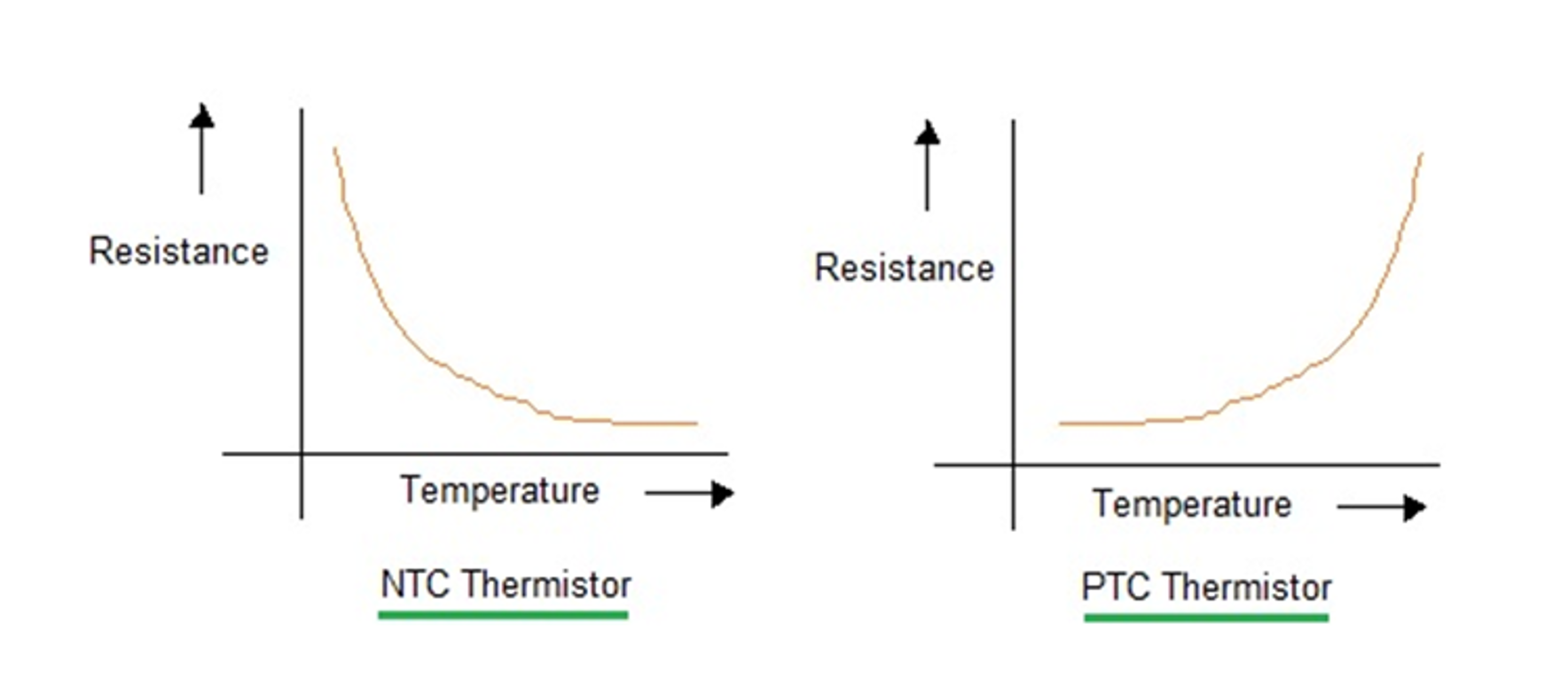
What is the difference between an NTC and a PTC thermistor
NTC thermistors NTC thermistors are thermal resistors having a negative temperature coefficient. Their resistance decreases significantly with the rise in temperature. These resistors are constructed from ceramics or polymers like nickel, cobalt, manganese, platinum, iron, titanium, etc.. Performance indicators of PTC thermistors The PTC.

Perbedaan Thermistor NTC Dan PTC, Kamu Harus Tahu Ini!! Klasotomotif
NTC and PTC thermistors have different applications due to their distinct temperature-resistance characteristics: NTC Thermistors: They are commonly used for temperature sensing, measurement, and control applications, where high sensitivity and accuracy are required. Examples include temperature sensors in consumer electronics, automotive.

NTC PTC THERMISTOR//THERMISTOR testing//test sensor multimeter//
An NTC thermistors reduces its resistance with an increase in temperature and are available in a variety of base resistances and temperature curves. NTC thermistors are usually characterised by their base resistance at room temperature, that is 25 o C, (77 o F) as this provides a convenient reference point. So for example, 2k2Ω at 25 o C.

Prinsip Kerja Sensor Suhu dan Jenisnya (Termistor PTC dan NTC)
Thermistors. Learn the basics of how thermistors work in this video on thermistor basics temperature sensor.👉 👉👉 FREE design software ️ https://www.altiu.

Thermistors NTC and PTC Thermistors Explained Latest Open Tech From
What's the Difference Between NTC and PTC? Across a range of industries, Positive Temperature Coefficient (PTC) heaters offer myriad benefits, including a simple troubleshooting approach, minimal maintenance, and secure, efficient heat transfer. Despite their apparent advantages, they're still competing with their counterparts, Negative Temperature Coefficient (NTC) heaters. With multiple.

Perbedaan Thermistor Ntc Dan Ptc INFO RUMAH CLUSTER
PTC thermistors are unique in that they act similarly to NTC thermistors with the resistance dropping as temperature increases until the Curie or switching temperature is met.

Understanding How NTC & PTC Inrush Current Limiters Work YouTube
PTC Thermistors vs. NTC Thermistors for Inrush Current | Ametherm Blog » PTC Thermistors vs. NTC Thermistors for Inrush Current Inrush current can damage equipment. Learn how to effectively manage inrush current with PTC thermistors and NTC thermistors in this blog post.

NTC & PTC // Heißleiter und Kaltleiter Erklärung YouTube
A thermistor's resistance value increases or decreases with changes in temperature and are an effective first line of defense against inrush current and rand.

NTC and PTC thermistors characteristics Download Scientific Diagram
Both negative temperature coefficient (NTC) and positive temperature coefficient (PTC) thermistors' values change as a result of temperature but impact their use differently. For NTC thermistors, as temperature increases, the resistance drops from high to low and allows current to pass through.

What is NTC and PTC ? YouTube
The ceramic PTC have the Curie temperature, which is the temperature where is the lowest resistance, stays in the minimum point on the purple curve in the graphic above. Materials. The most used materials to NTC are manganese, nickel and copper. To PTC the most used material is the polycrystalline ceramic in a barium titanate (BaTiO_{3}) substrate.

Basics of NTC and PTC Thermistors Another Teaching Moment DigiKey
NTC vs PTC Thermistors Relationships and Calculations Applications of Thermistors Projects with Thermistors Overview of Thermistors What is a Thermistor? A thermistor is an amalgamation of two words: Thermal and Resistor, which literally makes it a temperature-sensitive resistor!

What is the difference between an NTC and a PTC thermistor?
NTC thermistors are widely used as inrush-current limiters and temperature sensors, while PTC thermistors are used as self-resetting overcurrent protectors and self-regulating heating elements. An operational temperature range of a thermistor is dependent on the probe type and is typically between −100 °C and 300 °C (−148 °F and 572 °F). Types

Difference between NTC and PTC thermistor resistance curve. Engineering
This electronics video tutorial provides a basic introduction into thermistors also known as temperature dependent resistors. There are two types of thermal.

NTC y PTC tecnpara3ºeso
PTCs are never used for temperature measurement, like NTCs are. Instead, PTCs are used for temperature reaction.

Termistores NTC e PTC YouTube
NTC and PTC Thermistors Vishay, NTCS0603E3473FHT. The NTCS0603E3473FHT from Vishay is part of the NTCS0603E3 family of thermistors. These thermistors come in a variety of nominal resistance measurements and have NTC values. This particular surface-mount component is a glass-encapsulated component, making it ideal for industrial or automotive.

Perbedaan Thermistor NTC Dan PTC, Kamu Harus Tahu Ini!! MotoGpOn
PTC stands for positive temperature coefficient and NTC is negative temperature coefficient. An NTC's resistance will decrease with temperature; where as, the resistance from PTCs will increase. Regardless of which thermistor is being used, it is important that the devices be tested prior using.